
Recently a friend was having a professional home energy audit performed, and I asked to tag along. I was curious to learn what tools and techniques a professional uses to analyze the efficiency of a home. I also wanted to learn what actions an auditor would recommend. The audit was performed by James from Energy Services Group, a local business specializing in residential energy conservation since 1981.
If you live in central Maryland, Baltimore Gas & Electric (BGE) is probably your energy provider. The state of Maryland requires BGE (and other providers) to develop energy efficiency programs with the goal to reduce electric consumption by 15% by the year 2015. Examine your monthly bill next time and look for the EmPower Md. Charge. That fee funds the programs and enables BGE customers to take advantage of services like the Home Performance Energy Audit at a fraction of the cost. According to the BGE website, the Home Performance Energy Audit costs $100, and it’s a $400 value. Furthermore, a number of home improvements quality for rebates through the BGE Smart Energy Savers Program.
My friend’s home energy audit began with simple information gathering. James toured the house, examining the interior and exterior and noting the various appliances and utilities. He mapped out the house and measured the volume of each room. My friend also provided 12 months of utility bills.
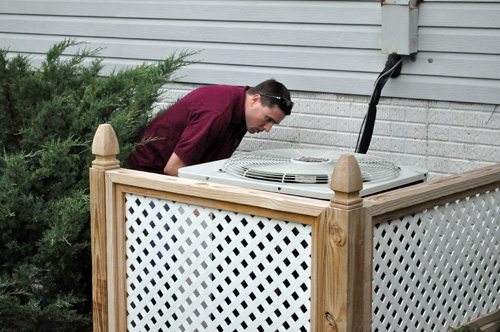
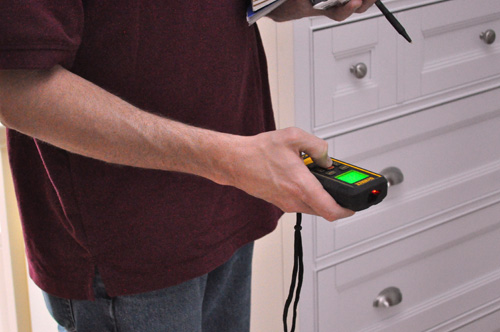
Home Energy Audit: The Attic
The attic and basement are where home energy auditors find the majority of problems, and James started in the attic. He quickly identified a section of fiberglass insulation that was all black. Homeowners commonly think the insulation has mold growing on it. However, that was not the case. The insulation was discolored from dirt as air continuously passed through it (much like a furnace filter). This was a great indicator of where air was infiltrating the house from the attic.
Pro-Tip: Attic fans are an active way to cycle air through an attic. James likes to recommend passive approaches like ensuring soffits and the ridge vent are clear because passive methods create fewer points of failure.
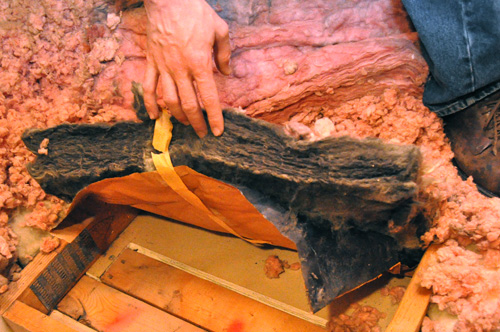
My friend’s attic had the right amount of insulation. Unfortunately, in a few places it wasn’t against the structure and therefore not actually insulating anything. James also suggested using weather-stripping and 6″ of rigid foam board to insulate the attic access panel.
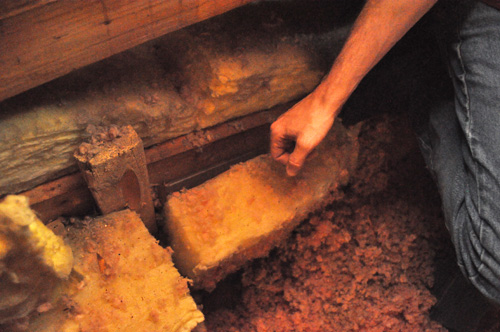
Pro-Tip: If you’re planning on making the attic a living space or have a significant number of utilities running through the attic, consider a hot roof to incorporate the attic into the conditioned space.
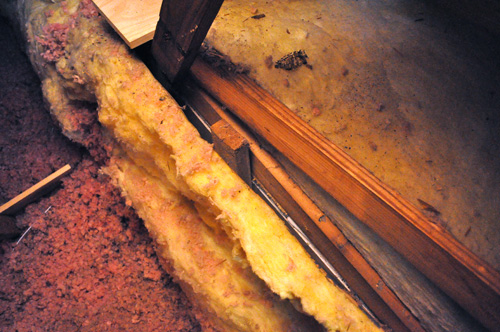
Home Energy Audit: The Basement
Next, James went to the basement, and he insulated the hot and cold water pipes.
Pro-Tip: The 2012 International Energy Conservation Code (IECC) section R403.3 requires a minimum of R-3 on piping carrying fluids above 105°F (41°C) or below 55°F (13°C). See the Related Content section for a link to the free, online IECC.
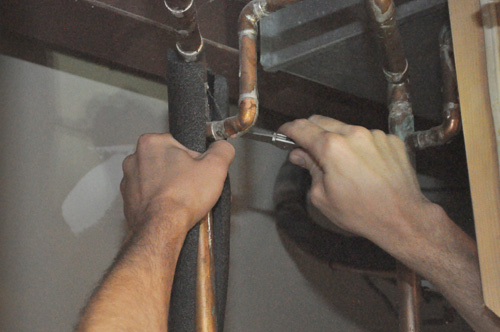
My friend had previously insulated a portion of his band boards, and James recommended finishing the job. James suggested cutting rigid foam board to fit against the band board and sealing the edges with Great Stuff.
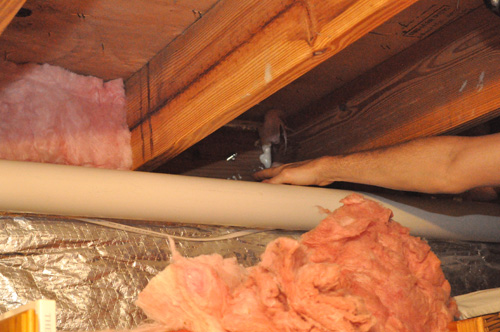
James checked the gas lines for any leaks, and he analyzed the ambient CO levels around the HVAC unit and gas range in the kitchen.
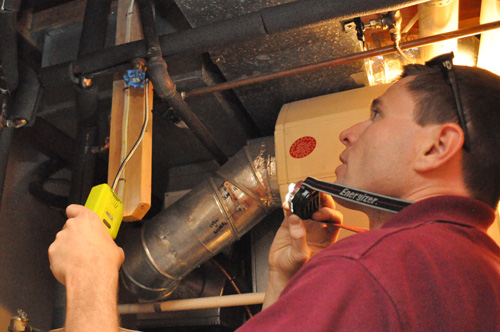
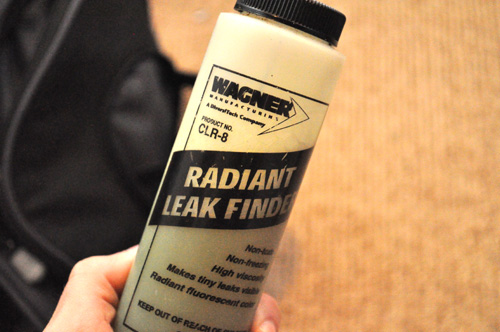
James also ran a Worst-Case Depressurization test to verify combustion safety. Basically, James was measuring the amount of negative pressure with all the exhaust fans (kitchen hood, bathroom vent fans, dryer, etc.) running to see if it was enough to create a backdraft.
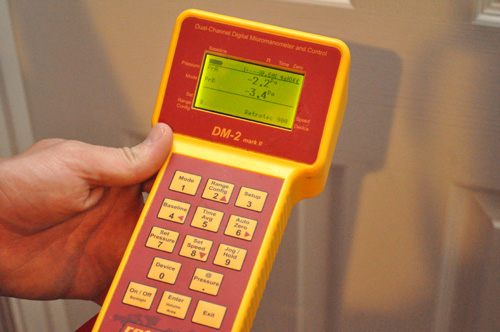
James also analyzed the amount of carbon monoxide exhausted by the furnace. High levels of CO indicate poor combustion and low efficiency and vice versa.
Pro-Tip: James recommends a CO detector on every level of the house.
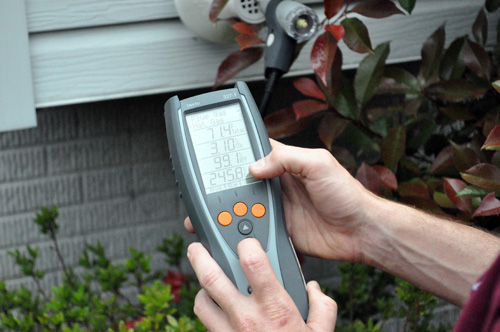
Home Energy Audit: Blower Door Test
Lastly, James performed a blower door test, and these are very helpful to determine air leakage.
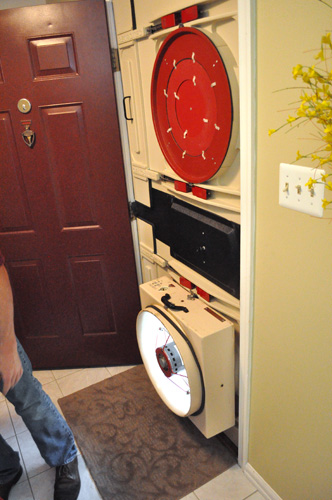
James setup all the equipment in the main entry door and used the fan to create a negative pressure.
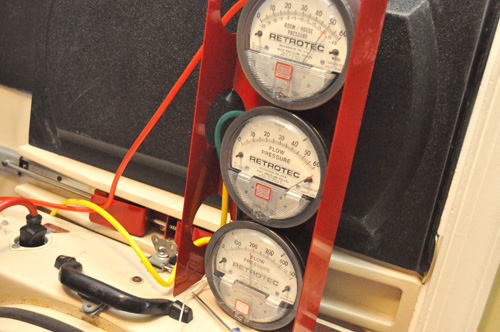
Next, we walked the house finding air leaks. The most common culprits included around switch and outlet boxes, ductwork junctions, attic access and doors. It was amazing how easy it was to feel the air coming through.
Pro-Tip: Rather than address air infiltration around electrical boxes, James suggests stopping it at the source by sealing the top plate of the wall framing.
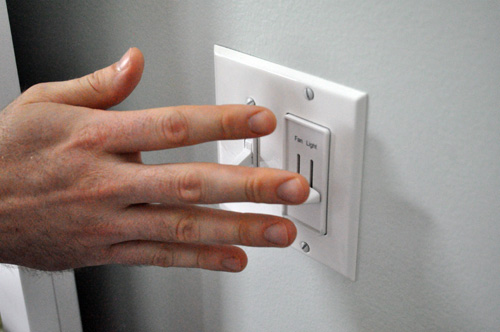
We could feel air moving at the junction between the ductwork and the floor (not through the ductwork), drawing unconditioned air from the space below.
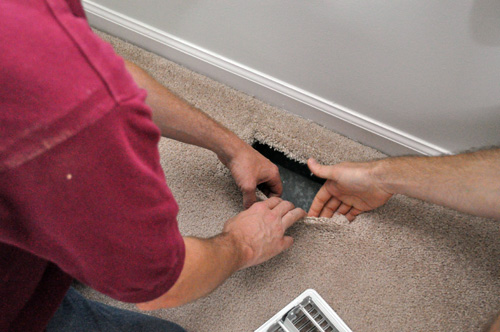
Much like the insulation in the attic, some carpets build up dirt adjacent to the wall from “filtering” the air as it moves though. I was surprised to find how leaky the wall was around the bottom plate.
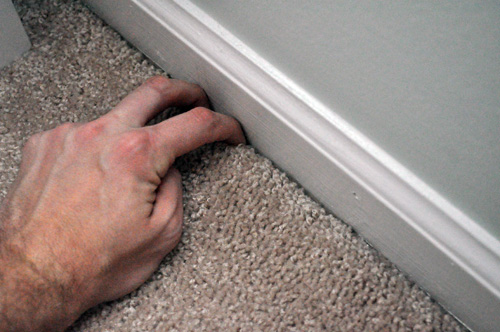
Another surprise was the amount of air moving through this door latch. Air must be traveling through the top plate, wall framing and out through the strike plate.
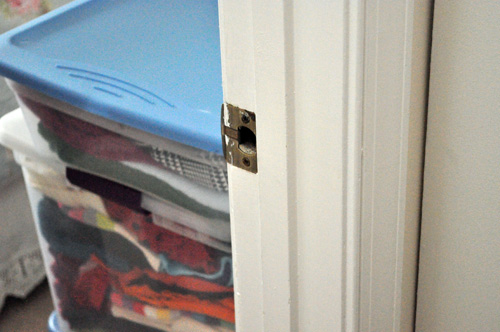
James paid special attention to the door leading to the garage because that’s often a source of VOC’s and other potentially harmful gases.
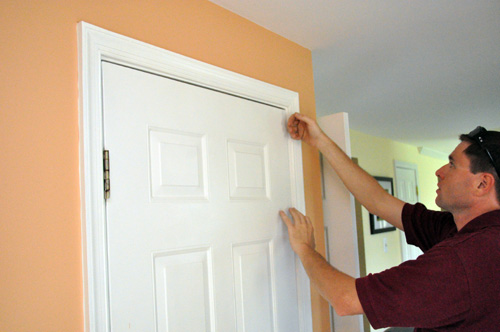
James performed some other miscellaneous tasks like installing CFL bulbs and faucet aerators. Normally James would examine the insulation with a thermal imager. Unfortunately, here in Maryland the outdoor and indoor temperature are about the same right now so he omitted that step. Altogether it was a very educational audit. It let my friend know exactly where air was entering the house and the best way to address the problems.







Overall that looks like a pretty decent audit & program, though I didn’t see anything about testing the ducts or HVAC units where almost 50% of your energy use goes.
I also got to say I like the look of the older style Retrotec blower door, that is pretty sharp.
That’s a great point. We didn’t discuss too much ductwork, and fortunately just about all of it goes through conditioned spaces. Even so, sealing it with mastic is a good idea. Any other ductwork tips you can offer Sean?
The biggest one is – while duct tape may have a 1001 uses, using it on ducts is not one of them.
Beyond that, I hope you don’t mind me punting them over to my site – http://bit.ly/DuctSeal – but that piece has a ton of info for not only Homeowners but also professionals trying to pass the Duct Leakage Test required here in Alabama & a few other states
Another tool a person can use if they can’t feel the air flow is a smoke pen or incense stick. The really light smoke will show them where the air is going.
Thank you so much for this post! I have always wanted a home energy audit. My home is a 1960’s rancher with an unfinished basement and original windows – so I know it needs improvement in terms of energy efficiency. I didn’t realize how easy and affordable a home energy audit would be. I know my husband and I have much to do, but I’ve always thought a home energy audit would assist us in prioritizing our projects. Thanks!
Fireplace chimneys weren’t specifically discussed, but are also of concern. Close the damper and use a smoke pen or incense stick ( Jeff’s excellent testing devices!). If smoke trails upward, you probably have a leak, perhaps due to a less- than-fully closed damper. Commercially available devices are available to seal the chimney. You just need to remove them before starting up a cozy fire.
I am sure that over the period of ownership, that $100 audit will save the owners well more than $100 in energy costs. Of course, it’s probably not worth the hassle financially unless you plan to be in a house for a little while.
This is a cool checklist of things I should look at when I get home. I’m afraid of what I would find out with an analysis like this!
I would guess that not only do most energy companies subsidize the audit, but they would do the same for home energy upgrades. Lots of incentive to do so
I have noticed that energy companies near me tend to subsidize part, if not all, of the audit as well… doesn’t that, in a sense, reduce their profits at the end of the day? what is the motivating factor from their end? do they REALLY care about not wasting energy resources?
As for caring… well some really do, some don’t – as mentioned at the start they are required to by the state & the funding it actually comes out of everyone’s bill.
Of course no matter how efficient one makes a home, one is still going to need power & as the population grows, so does the need. This actually presents a problem for them though as they need to make sure they can provide the power when needed & when it comes to spending millions for a new plant or tens of thousands to help make sure they don’t need a new one, this can actually pay off for them while giving them good will credits from consumers
As a quick aside, as I mentioned in my first comment above, it looks like this is one of the more decent programs (though it was not as thorough as many independent auditors or raters like me are). Shoot in my area people pay $50 for a clipboard audit & some trinkets.
All great points. Where I live LG&E also will do this and actually give you money off your bill if you let them install a shut off they control. This is usually done while most people are at work.
So thats what there is dirt around the floor vents. I knew there were air leaks but still. I know there’s more here.
Can’t you just use a thermal imaging camera to detect air leaks. Would be easy to detect in the winter.
The dirt can actually be from 3 places – the base plate, the register not being sealed to the subfloor, and of course from the unit itself blowing
As for infrared detecting air leaks, the short answer is no, not by itself. It can spot thermal anomalies but without something forcing the air to move through the area (wind, blower door,…) it really won’t show up
I agree with Sean, it would require a pressure differential to see air leaks. However, you can always use a thermal camera to see areas which are lacking insulation, thermal shorts and what not at anytime throughout the year… It is easiest when the thermal difference of inside-to-outside is greatest.
I had an energy audit completed just over a year ago. It wasn’t quite as thorough as the test being described here, but was effective in identifying some areas to remedy and the energy audit was a prerequisite for obtaining some of the grants for doing the work it recommended.
Our electric utility did an energy audit of our home years ago, but it wasn’t nearly this comprehensive. It helps to know what to look for.
Thanks for sharing what to look out for. I’ve always thought about having one of these audits done.
About the article – very well done and shows the various steps in one of these audits. I have 2 nitpicks:
First, the new home code has you insulating the hot water pipes, but calculations show this is not cost-effective. This is not mandatory in older houses as they are worked on.
Second, you suggest a hot roof if finishing the attic. There are many factors that go into this including climate, construction, extent of finishing, and others. It is usually less expensive and just as effective to do the conventional steps, but do them well and completely.
Thanks
Great article! This is a very informative and thorough example of an home energy audit, Thanks for sharing!
This is great advice on what to watch for in your home, thanks for sharing!
From the photos that is not nearly enough insulation in the attic. Also fiberglass doesn’t actually perform to it’s rated R value 99% of the time. The way insulation is tested is not the way it is almost ever installed. You should either do the hot roof option or have a home performance company (Dr. Energy Saver is a well known one) go through and do a thorough air sealing job on the attic flat and then blow at least 12″ of cellulose on top. If you go that route then you should also have an insulation dam built around the attic hatch and a well insulated and perfectly air sealed hatch. Plus make sure you have some ridged vent boards placed in the eaves to prevent the cellulose from clogging the eave vents.
A hot roof is really the best option to future proof against future “upgrades” such as attic duct work or recessed lights that can cause excessive heat loss between the attic and living space.
I’m glad he did a carbon monoxide check, I can’t stress how important that is!
However, did he do a full combustion analysis on the furnace? Usually you can gain some efficiency on a gas furnace by tweaking some of the settings – much like tuning a car.
Usually, a knowledgeable HVAC company can preform this test for about $50.
Good points to check. Even small leaks around electrical outlets add up to heat or cooling loss. Around windows, especially in other homes, or homes will using single-pane windows, contribute to heat in the summer and cold in the winder.
I’ve never had something like this done to my home and I think it would be a good idea to do it. I’ve always wondered how much extra money I am spending due to things being inefficient. I would want all of the audits you listed here done. Especially the basement since I don’t know how well my furnace and other piping is.